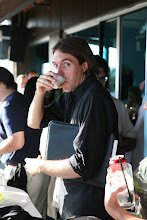The Research Process Part III
Critical Reading and Critical Writing
We are finding sources. They are coming from journals and books, but what now? Oh my, look at all this stuff!
Look, the truth is you have to develop a strategy to effectively analyze your sources in a timely fashion. We are not working on our Post-doc fellowship here, we don’t have five years to do this research, our papers are due in a few weeks and we need to get a move on. To do that, we need to chop this stack of papers in half and make sense of what we have left.
Reading critically is one of the most important aspects of this entire process. In order to write your own analysis of a subject and to add your voice to the larger cultural and academic debate, you have to understand the information before you.
As we grow as readers and writers, we develop our own methods of doing this. However, across these, I think the following advice holds up.
• Read with the intent to understand, to decipher, to make sense of this
• Take breaks
• Read slowly
• Print or make photocopies of articles or book passages and mark them up
• Don’t give up
My advice is to break this practice into two parts: Initial Appraisal of the Text, and Context Analysis.
A. Initial Appraisal: This entails your first approach to the text wherein you discover if it has any value to you and your paper. We start by looking critically at some of the physical characteristics of the text, without delving too deeply into the text. Remember, our job here is to determine usefulness. Start by flipping through the text. Look at:
I. Author: Is this author credible. Will including his words in my paper help my ethos or will it make my paper seem unwontedly slanted or biased (for example, what happens if your papers is full of Rush Limbaugh quotes?)
Does this author have the necessary authority and expertise so that his ideas can serve as evidence in your argument? If no, ditch the article.
II. Date: Is the publication date of this source current enough to meet the demands of your topic? Be reasonable. If I am writing about meatpacking, sure, it won’t hurt to throw in an Upton Sinclair quote from The Jungle, but I can’t rely on that for evidence. I need information that pertains to meat packing plants now. If it’s not timely enough, if it is out-of-date, ditch it.
III. Relevance: Occasionally, I have found a really interesting article that I enjoyed reading and want to use in my paper. The problem, it has nothing to do with my topic. I can either change my topic to fit this in, or ditch it. Quickly analyzing a document’s worth to your own ends takes practice, but remember, in the end doing this saves you time in the long run.
Research III, page 2
So How? My first impressions of a book/article and its material come from browsing. Read the Table of Contents, the Abstract, the introduction, discussion or conclusion. Read any tables or graphs or appendices you find. Look at how the chapters of sections of the text move from beginning to end. Look at the work’s cited. If you see any titles there that might be helpful go find them. Mostly, use this initial analysis to determine if the text before has worthwhile information that will help YOUR argument.
B. Content Analysis: You hooked a nice source, now you have to get it into the boat. To do this, you have to sit down and make some sense of it. Reading complex material can be not unlike reading something in a foreign language that you don’t speak well. Here, read to decipher. To understand. Piece together meaning. Read slowly. Take notes. Look at:
I. Make a Rhet. Precis if the article is argumentative. Look at the Author’s Intentions. Find the thesis of this argument. Analyze the evidence. Examine the author’s purpose.
II. Mark possible passages you may want to use in your paper. Mark them so that you can find them later. Write what it is and why you can use in the margin. Example: “This is a good counter argument to smoking is bad for ducks.”
III. Take notes. Write on sticky notes. Scribble on your articles. You have to organize this information so you can quickly access it later.
IV. Ask yourself, as library.cornell.edu does, if “the work update other sources, substantiate other materials you have read, or add new information? Does it extensively or marginally cover your topic? You should explore enough sources to obtain a variety of viewpoints” (http://www.library.cornell.edu/olinuris/ref).
V. Contextualize. Dive into text. Separate fact from opinion. Opinion from propaganda. Is the information here well researched? What assumptions does this author rely upon? Is she in line with the others arguments you’ve encountered on this topic? Is she in line with the others, adding to their points, furthering a bit passed over by most. Does this use primary or secondary sources (try to find both)? To do this, you should read everything TWICE.
Mostly, all I can say is this is never an easy process. It gets less painful, however, the more you practice. The good side to this is this process can and should lead to new source material and improved ideas as you go along.
Also, remember that this process is recursive. Reflect on what you are doing often. Fiddle with your topic as need be. Go back and redo. That’s the name of the game.
Thursday, October 23, 2008
Subscribe to:
Post Comments (Atom)




No comments:
Post a Comment